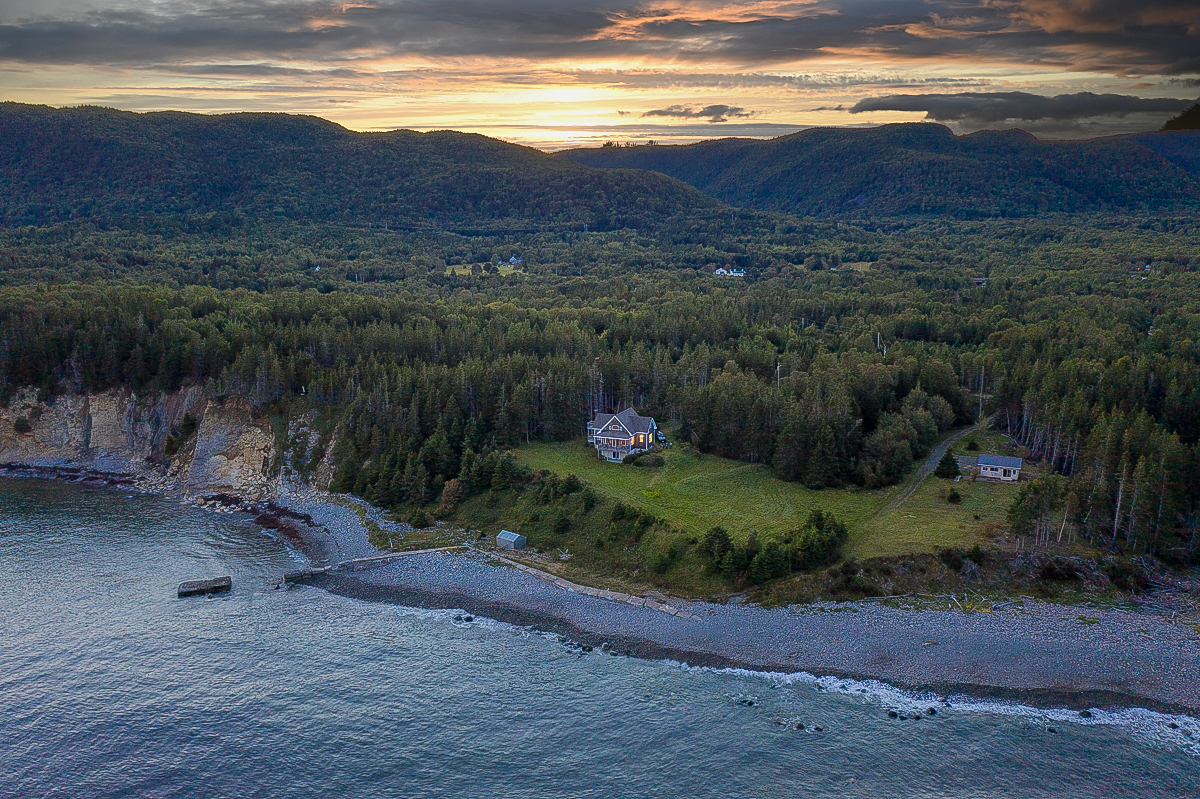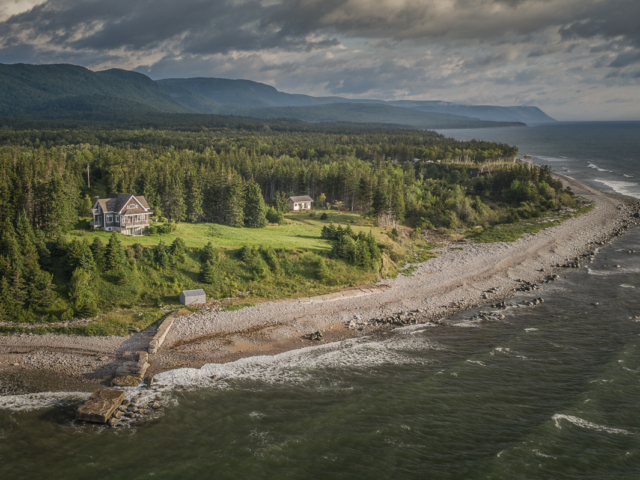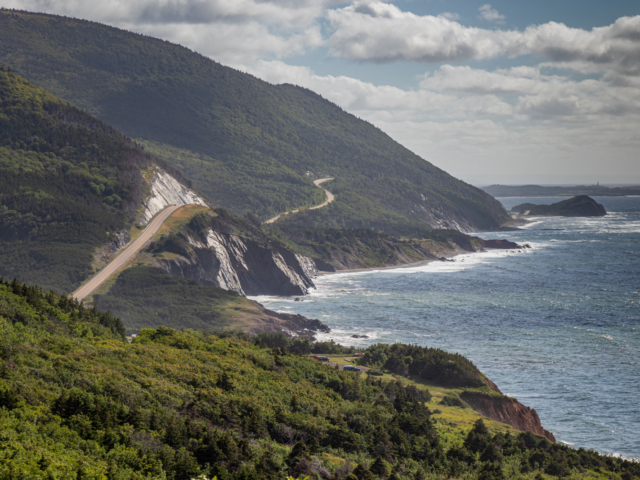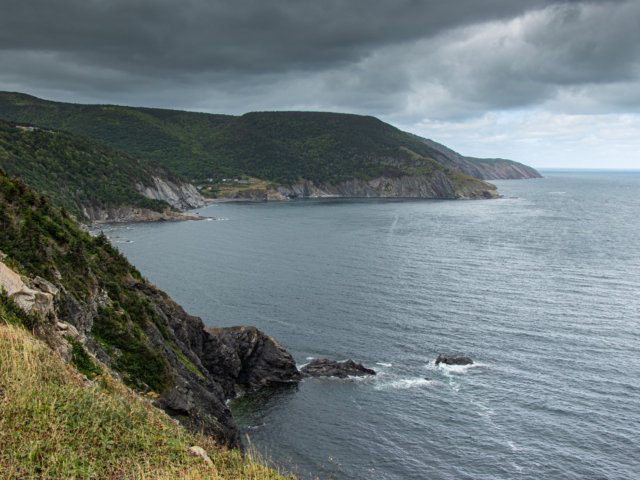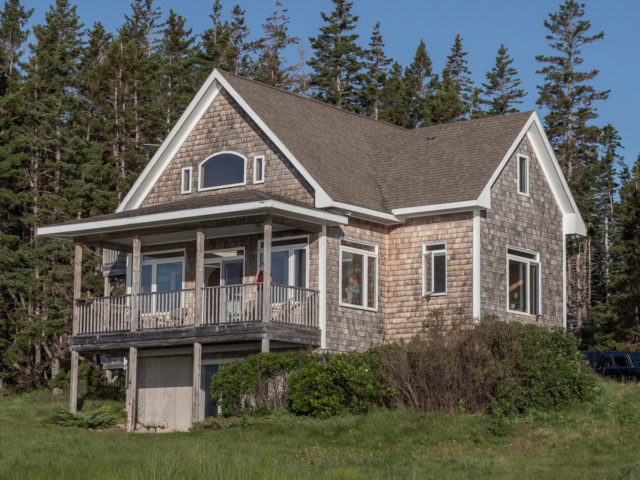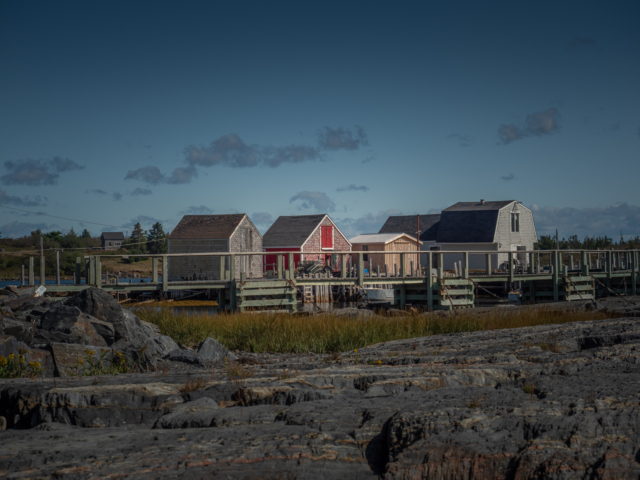Skir Dhu. Cape Breton, Nova Scotia
Cape Breton had been on our bucket list for years; a place of rugged coastlines, lighthouses, winding roads, and a deep Celtic culture. When my wife Eliza found the perfect home to rent in Skir Dhu for a week, we jumped at it, eager to trade the relentless September Florida heat for cool Atlantic breezes and a view that stretched endlessly northeast toward Newfoundland. With hurricane Dorian lashing the Bahamas and now hot on our heels, we took off with our good friends Travis and Marina who joined us on the journey. Armed with cameras, drones, and warmer-than-usual clothing, the four of us departed for a long weekend of great food and sightseeing in Boston before renting a car and heading to our destination in Skir Dhu, NS. But not before a side trip to Glouster and after that, the Bay of Fundy.
We made a quick stop in Gloucester while on our way north to our scheduled tidal bore trip near Moncton, New Brunswick. The Fisherman’s Memorial was the highlight of our visit; a sobering tribute to the countless fishermen lost at sea. The statue, standing watch over the harbor, bears the inscription “They That Go Down to the Sea in Ships,” At a good friend’s recommendation, we ate at The Causeway; a no-frills diner and local favorite with good food piled almost too high on our plates. Then, with time to spare, we wandered back to the waterfront and spotted the vessel that replicated the Andrea Gail used in The Perfect Storm – one of our favorite movies.
As a fishing guide who has spent countless hours on the water under all kinds of adverse conditions, experiencing the tidal bore near Moncton in the Bay of Fundy was not something I was stoked about… equal parts chaos, thrill, terror, and mother nature flexing her great big muscles. We all sat in the Zodiac with our guide ready at the helm. At dead low tide, and not even afloat yet, we were resting on the bottom in what seemed to be a giant mud puddle. Waiting only a few minutes for the tide to change, we heard the roar first, then turned, looked upriver, and saw the beast approaching.
The eight-person Zodiac bucked and dove as the surging bore barreled down the river, churning the water into a muddy, fast-moving mass of large standing waves. Hanging on for dear life, we flew over wave after wave, laughing between grunts and gasps for air. The guide, clearly enjoying himself, pointed out how the riverbanks transformed from exposed mudflats to a raging river in mere minutes, a testament to the Bay of Fundy’s legendary 50-foot tides. The trip wrapped up as the tide eased, leaving us soggy, and exhilarated, with the others already plotting when they’d do it again.
Skir Dhu, located on the upper northeastern coast of Cape Bretton, is where the pace of life seems to slow down. No big grocery stores, no chain restaurants, just a ribbon of road called the Cabot Trail hugging the coast, with beautiful weathered homes and thick spruce forests standing watch over the Atlantic and Gulf of St. Lawrence. Just off the Cabot Trail, about a mile down a winding and well-kept dirt road, was our home for the upcoming week. The rustic two-story home sat on a large property perched over eighty feet high overlooking the Atlantic. With endless ocean views, it was a place where you went to bed and woke up to the sound of waves pounding the nearby cliffs and rocky shorelines, with no humans in sight.
Our mornings started slow, with strong coffee and loose plans taking shape on the deck overlooking the Atlantic. Afternoons were spent wandering through the small villages along the Cabot Trail and hiking the web of trails that cut through the Cape Breton Highlands.
The few locals we met had a way of making you feel like you belonged, even if they weren’t ones for much small talk. At the general store down the road, conversations were brief but warm, the kind where a nod meant more than a drawn-out exchange, and the owner just happened to be an exile from the Florida Keys.
Of course, our visit to Skir Dhu would not have been complete without regular stops at The Clucking Hen. Just down the road, this little café and bakery became a favorite haunt for breakfast and lunch, fresh-baked bread, homemade sweets, and hearty fare such as poutine that fueled us for the day’s adventures. The coffee was good, the company easy, and the ocean view from the patio wasn’t bad, either. We still talk about the ‘Hen’ and how much we miss it.
Seemingly following our trail to the northeast, one of the most unforgettable moments of our stay came when Hurricane Dorian passed nearby. A friendly neighbor who was also the property’s caretaker stopped by and assured us that our home was built to withstand hurricane-force winds and he would check on us after the storm had passed the next morning. He also mentioned he had an extra generator, a chainsaw, and a backhoe, in the event that we needed them… a comforting thought as the storm approached.
While spared the worst of Dorian, which passed to the west of us over nearby Prince Edward Island later that evening, the ocean put on a show like nothing we’d ever seen – even for all of us who live in the hurricane-prone Florida Keys. Massive waves over 36 feet rolled in, crashing to the top of the cliffs, and the house shook with winds gusting to 90 mph. With strong adult beverages in hand, we stood in awe, watching nature’s raw power unfold through the home’s large and flexing floor-to-ceiling picture windows, a humbling and mesmerizing sight that ended up being one of the highlights of the trip. We didn’t realize until later the devastation Dorian had wreaked in the Bahamas.
Nights in Skir Dhu were something else entirely. With no city lights to dull the sky, the stars sprawled above us, a reminder of just how insignificant we were in the grand scheme of things. The wind off the ocean and the occasional crack of a wave against the cliffs were the only sounds we heard.
In early September, the first hints of autumn had crept into the air, but we weren’t ready to leave. Skir Dhu had worked its way into us, not just as a place on a map but as something deeper, a message of how good life could be when it’s much simpler: the ocean, the land, and the people who knew how to live with both.
One of our favorite places, and we’ll be back. There’s no question about that.
Before we flew back home out of Halifax, we spent a few days at Peggy’s Cove, a tiny fishing village on the rugged coastline south of Halifax, famous for its lighthouse, rocky shoreline, and a photographer’s dream. The Peggy’s Point Lighthouse, resting on massive granite boulders, is one of Canada’s most iconic landmarks. The area’s name comes from a local legend about a shipwreck survivor named Peggy who settled there. The village still has a working fishing community, with colorful boats, weathered shacks, and lobster traps dotting the docks. It’s a magnet for visitors and was a little too busy for our taste, with buses full of tourists doing day trips off the cruise ships stopping overnight in Halifax. That said, it was worth the visit.

